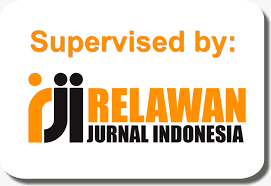USING PARS STRATEGY TO IMPROVE SECONDARY SCHOOL STUDENTS’ READING COMPREHENSION
DOI:
https://doi.org/10.52333/djoee.v4i1.78Keywords:
recount text, reading comprehension, PARS strategyAbstract
Reading holds an important role in our lives. Reading allows us to expand our insight and knowledge. This research highlights the implementation of PARS strategy to improve secondary students’ reading comprehension. The objectives of the research were to find out whether or not there was any significant improvement on students’ reading comprehension of recount text by using PARS strategy and to find out whether or not there was any significant difference in students’ reading comprehension of recount text between those who were taught by using PARS strategy and those who were not. The population of this research was the tenth grade students of SMA 11 Palembang. The sample was taken by using purposive sampling and consisted of 85 students. The method of this research was a quantitative research with quasi experimental research design. The process of collecting the data was done by administering reading comprehension test with multiple choice form. The obtained data were analyzed by running Paired Sample T-test and Independent Sample T-test via SPSS. The result of Paired Sample T-Test revealed that PARS strategy could significantly improve students’ reading comprehension of recount text. Meanwhile, the result of independent sample t-test signified that there was no significant difference in students’ reading comprehension between those who were taught by using PARS strategy and those who were not.
References
Amalia, N. (2017). The Improvement of the Students’ Ability in Reading Comprehension through Extensive Reading at Grade XI Madrasah Aliyah Swasta Al-washliyah 21 Firdaus 2016/2017. Medan[thesis]. Medan (ID): UIN Sumatera Selatan
Brown, H. D. (2001). Teaching by principles. An interactive approach to language pedagogy (2nd ed.). White Plains, NY: Longman.
Crystal, D. (1997). English as a global language (2nd ed.). New York, NY: Cambridge University Press.
Cheek, E.H.,Jr., & Cheek, M.C. (1983). Reading intruction through content teaching. Columbus, OH:Merril.
Habók, A., & Magyar, A. (2019). The effects of EFL reading comprehension and certain learning-related factors on EFL learners' reading strategy use. Cogent Education, 6(1), 1616522.
Kelly, A. (2012). How we got to where we are. J. Graham & A. Kelly, (Ed.), Reading under control teaching reading in the primary school (3th ed.) USA: Routledge.
Kimberly. (2014). Definition of reading comprehension. Retrieved from https://www.learningunlimitedllc.com/2014/05/9-definitions-readingcomprehension/
Lane, H. (2014). Evidence-based reading instruction for grade K-5 Retrieved from http://ceedar.education.ufl.edu/tools/innovationconfigurations/
OECD (Organization for Economic Co-operation and Development). (2013). PISA 2012 Results in Focus. Retrieved from:
http://www.oecd.org/pisa/keyfindings/pisa-2012-results-overview.pdf .
OECD (Organization for Economic Co-operation and Development). (2016). PISA 2015 Results in Focus. Retrieved from:
http://www.oecd.org/pisa/keyfindings/pisa-2015-results-overview.pdf
OECD (Organization for Economic Co-operation and Development). (2019). PISA 2018 Results in Focus. Retrieved from:
http://www.oecd.org/pisa/keyfindings/pisa-2018-results-overview.pdf
Rao, P. S. (2019). The role of English as a global language. Research Journal of English, 4(1), 65-79.
Rosmayanti, V., & Yahrif, M. (2019). The implementation of role play activities to get students speak. Indonesian EFL Journal: Journal of ELT, Linguistics, and Literature, 5(1), 77– 92.
Rosmayanti, V., Hasnani, & Monalisa. (2021). The implementation of preview, ask questions, read, and summarize strategy in reading class: an action research study. Uniqbu Journal of Social Sciences, 2(3), 37-49.
Sari, S. P. (2019). Improving the tenth graders’ reading comprehension using ETR method. DIDASCEIN, 1(1). Retrieved from https://www.univ-tridinanti.ac.id/ejournal/index.php/didasceinenglish/article/view/593/575.
Septianingsi, P., & Atmanegara, Y. (2021). The influence of english reading attitude on students’ reading comprehension. DIDASCEIN, 2(2), 116-124.
Westwood, P. (2008). What teachers need to know about learning difficulties. Victoria: Australian Council for Educational Research Ltd.
Wormeli, R. (2005). Summarization in Any Subject: 50 Techniques to Improve Student Learning. (Associatio).
Downloads
Published
How to Cite
Issue
Section
License
Copyright (c) 2023 Bella Anggraini

This work is licensed under a Creative Commons Attribution-NonCommercial-ShareAlike 4.0 International License.







